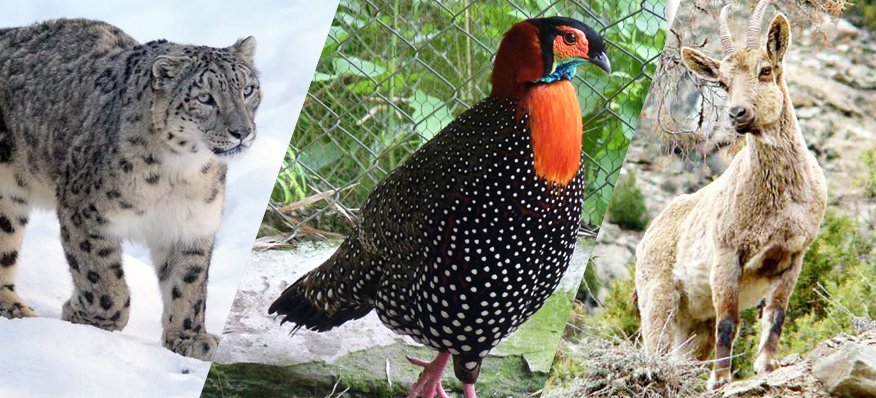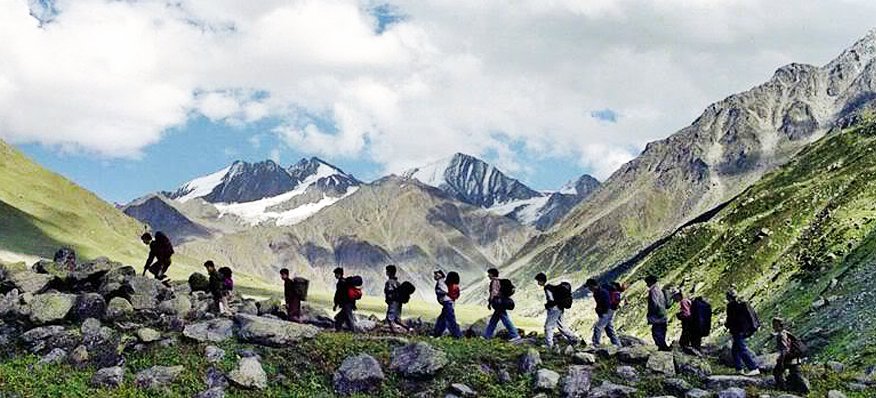Exploring roads less travelled always excite us. But what about places where there are no roads? The excitement and adventure quotient reaches to next level. Here is one such place to visit in Himachal Pradesh – Great Himalayan National Park, popularly known as GHNP.
GHNP is tucked amidst the stunning mountains of Himalayas and calls for a visit if you are looking to experience nature in its raw form. Here is everything you need to know about the national park.
The Great Himalayan National Park (GHNP)
Nestled in the heart of Kullu region, Great Himalayan National Park is a trekkers’ paradise and amongst the most scenic places of Himachal. It is spread over a sprawling 754 sq. km area and surrounded by Rupi Bhaba Sanctuary, Pin Valley National Park, and Kanwar Wildlife Sanctuary. The park was built in the year 1984 and declared a national park in 1999. Years after in 2014, it was enumerated as a World Heritage Site by UNESCO.
The park is home to exotic flora and fauna and offers a splendid view of the surrounding mountains. It has become a major tourist attraction for people looking to visit Tirthan Valley and the nearby areas. If you are planning to visit Great Himalayan National Park, here is a complete guide that can help you plan your trip. You will be able to know how to reach GHNP, fun activities that you can do, entry fees, dos & don’ts, as well as animals and birds you can spot here, etc.
How to reach
If you want to reach Great Himalayan National Park, here are popular routes that you can follow.
By Air: You can take a flight from Delhi or Chandigarh to Bhuntar Airport in Kullu which is around 60 kms away. You can take a private cab or a bus to reach GHNP
By Rail: You can travel through train from Delhi or Chandigarh to Joginder Nagar station, near Mandi. It is the nearest railhead to the national park, which is around 143 kms away.
By Road: There are no motorable roads to reach the national park, instead, there are a unmetalled roads which you can take. Once you reach Kullu, you can either take the route from Gushaini to Ropa in Tirthan Valley or from Ropa to Shangarh in Sainj Valley to reach the park.
The best time to visit Great Himalayan National Park is from March to June and October to November when the weather is extremely pleasant, and you can enjoy the lush green view. Around April, The Himalayan Eco-Tourism team also organises treks which you can partake in if you are looking for some adventure. This is also the time when many animals come down to the lower region. That said, Winter months are not suggested for visits due to extreme snowfall and cold. The monsoon season (July to September) is not advisable too as it can be too slippery.
Entry fee and permit
To visit Great Himalayan National Park, you are required to get a mandatory permit from the authorities. The permit can be attained from the head office of the park authority at Shamshi or zonal offices at Ropa and Shairopa.
The charges to obtain the permit are mentioned below:
Indian visitors – Rs 200/day
Foreign visitors – Rs 400/day
Indian students – Rs 800/day
Foreign students – 500/day
There are separate camping charges in GHNP which are provided below:
2 men tent – Rs 200/day
3 men tent – Rs 300/day
4 men tent – Rs 400/day
Above 4 men tent – Rs 700/day
Toilet tent – Rs 200/day
These are the mandatory charges that you need to pay to visit GHNP. If you are carrying cameras or handycams, you may have to pay additional charges.
Note – The authority also advises visitors of more than 1 day to buy travel insurance to cover medical treatment in case of emergency and evacuation.

Great Himalayan National Park animals
The GHNP is home to more than 375 types of animals. Some of the animals include Himalayan brown bears, Snow leopard, Musk deer, Himalayan tahr, and blue sheep. Most of these Great Himalayan National Park animals are protected under Wildlife Protection Act of 1972.
The national park also boasts more than 181 species of birds. Some of the popular species include, Western tragopan, Koklas pheasant, Monal, Brown bullfinch, and more. Thus, it becomes a major attraction for bird watchers. Best time to watch these animals and birds is from September to November when they start their seasonal migration and move towards lower grounds.

Great Himalayan National Park trek
The Great Himalayan National Park trek is extremely popular amongst adventure buffs. There are various trekking trails you can find in the park. They are as follows:
Tirthan Valley – Morahani Trek
Tirthan Valley – Tirath Trek
Shreekhand Mahadev Trek
Tirthan Valley – Gushaini to Rakhundi Trek
Sainj Valley – Raktisar Trek
These treks range from moderate to high difficulty. You can find more Great Himalayan National Park treks and read more about them here. There are two primary areas for trekking – the ecozone and park interior. All activities in the park are to be done on foot as there are no motor services provided. Multi-day treks require strenuous climbing, solid preparations, fit body, and high stamina. Moreover, you are advised to carry proper trekking gear and warm clothing for sudden drop of temperature.
